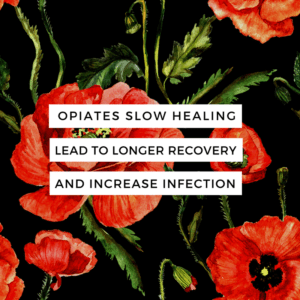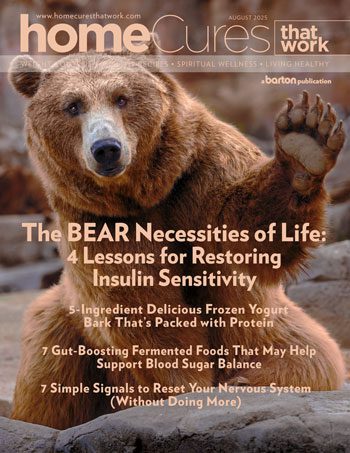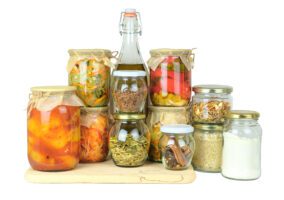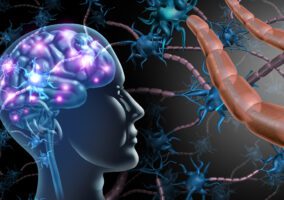Natural Pain Relief Without Opiate Drugs
Overcoming Opiate Addiction with Effective Options For Pain Relief
Dr. Bell had an office near mine, and always had plenty of patients. People came to see him from all over the Western United States because he was the best pain doctor around. One day, I got a frantic call from the administrator of a nursing home, “We need you now to take all the patients of Dr. Bell. He was just brought into custody by the DEA and his patients don’t have a doctor!” I agreed to take over, and soon found out the story. Dr. Bell was prescribing large doses of multiple opiate medications.
Opiates are drugs that bind to the same receptor as opium, a chemical derived from the seeds of a poppy long known for its pain-numbing properties. More than relieving the physical pain, which it does, it also relieves the emotional pain.
Heroin is derived from opium. It was named heroin because it was supposed to be the “hero” to replace morphine as a non-addictive substitute. Within twenty years, however, there were even more people addicted to heroin than morphine. By 1920 heroin addicts numbered almost 200,000 in the U.S. alone, causing Congress to make it illegal, and federally regulating all opiates.[1] Doctors are not allowed to prescribe heroin at all; it can only be used for research purposes.
Dr. Bell was prescribing the maximum dose of different kinds of opiates. Opiate drugs are those that are derived, either naturally or synthetically, from the opium plant. They differ in strength and length of time they work. The synthetic forms are also very similar to the natural opiates (endorphins, which I will discuss later) made by our own body and brain.
The Difference Between Opiates and Opioids
Opiates are processed from naturally occurring alkaloids in the opium poppy. This includes a wide range of drugs, all of which are known for their pain relief and euphoria-producing capabilities.
Types of Opiates that Come Directly from the Opium Poppy Include:[2]
- Codeine
- Morphine
- Oripavine
- Thebaine
- Heroin
Opioids, on the other hand, are synthetic, created in a laboratory from naturally occurring alkaloids in the opium poppy. Although man-made, opioids act like opiates when taken for pain due to their molecular similarities.
Types of Synthetic Opioids Include:
- Demerol
- Dilaudid
- Fentanyl (The strongest of them all)
- Methadone
- Buprenorphine
- Naltrexone
- Naloxone
Semi-synthetic opioids are made from natural opiates:
- Oxycodone (Percocet)
- Oxymorphone
- Hydromorphone
- Hydrocodone (Vicodin, Norco)
- Heroin
(For the sake of this article, I will use the term “opiates” for all forms of opium-related drugs.)
Dr. Bell was prescribing hydrocodone, oxycodone, and hydromorphone in large doses to the same people. Sometimes he would also give morphine. Various people were filling the prescriptions and selling the drugs on the black market. These medications aren’t safe; there were many ER visits, and several deaths from overdose attributed to these prescriptions.
Shocking News
Americans consume 80% of opiate drugs produced in the world, and represent only about 5% of the population.
If we add in Europe and Canada, we take in 95% of all opiate medications. The rest of the world uses them for temporary pain from an operation, injuries, or cancer. But in the U.S., anyone can get opiates for almost any reason.[3]
In the United States, many people abuse opiate medications. Hydrocodone (Vicodin, Norco) was the most prescribed drug in the United States until the Drug Enforcement Agency (DEA) changed the requirements. They now require that the patient see the doctor for each prescription, they can receive a maximum of one month’s supply, and cannot have refills. Because of this, the number of prescriptions has dropped dramatically, making opiate pain relief medications harder to obtain.[4]
Opiate Side-effects
Opium, and both the natural and synthetic drugs derived from it, can cause a number of side effects when the drug is abused. These side effects can range from annoying to severe, but the most common of them can all be problematic in their own way, including:
- Physical and psychological dependence
- Constipation and gastrointestinal pain
- Nausea
- Overactive allergies
- Sleepiness and insomnia
- Respiratory depression
- Slow heart rate and dizziness
- Itchy rash
- Heightened pain sensitivity
- Changes in temperament
- Liver injury
- Slowed healing
- Death by overdose
Opiates Impair Healing
Not until recently have we studied the effects of opiate medications on healing. Ironically, it turns out that opiates slow healing in many ways. Researchers have discovered:- The use of morphine slows wound healing.[5]
- Morphine inhibits the immune system leading to longer healing times and an increased chance of infection.[6]
- Also, the use of opiate pain medications for fractures causes weakening of the new bone, as well as slower healing.[7] This is important to know if you have injuries or surgery causing pain. In some cases it might be wise to use other means of pain relief.
Ineffectiveness of Opiates for Chronic Pain
Pain problems are associated with long-term use of opiates. Evidence of long-term efficacy of opiates for chronic pain is limited.[8]
Over time, the body becomes accustomed to having the medication, which then becomes the new “normal.” Thus, when people have less of the medication, they feel pain. This makes them more sensitive to pain of any kind, emotional, psychological, physical, and so forth. They will only feel normal on the medication. Some develop serious symptoms when they stop taking opiates. Those who are withdrawing from opiate medications most often describe the feeling as “the worst flu you could ever experience.” These symptoms may include congestion, diarrhea, and pain all over. Ironically, the more we use opiate medications for pain, the more pain people experience.
Opiate Addiction Dangers
Melanie was a promising teen in high school with insulin-dependent diabetes. I had been taking care of her parents for many years, but she was seeing a specialist for her diabetes. Since she had access to a large supply of needles, some kids who were using heroin befriended her. As a result, Melanie became addicted to heroin, starting a heartbreaking odyssey for her parents. She would disappear for days at a time. Once she called her father from Los Angeles saying she lost his car, and he drove over two hours to pick her up. He paid tens of thousands of dollars for rehab programs, none of which had any lasting effects. Finally, the stock market crashed and her father had no more funds to help her. He was forced to leave her to her own devices. Finally, Melanie cleaned herself up, got a job, started managing her blood sugars well, went back to her doctor, got married and has a child. She now avoids all opiate medications.
It turns out that many of the drugs prescribed to patients by doctors end up on the street sold to addicts. Counterfeit and street versions of opiates are an ever-present danger. The longer you use and obtain drugs illegally, the better chance you have of encountering one of these altered versions of the drug, opening yourself up to all the risks and dangers that come with them.
Along with the immediate risks of overdose, allergic reaction or bad drug interactions, counterfeit and street versions of opiates can also result in mistreatment on the part of doctors in an emergency situation. If someone is believed to be overdosing on a known opiate, but has actually taken a counterfeit or street version of the drug, doctors may be unable to correctly treat the patient.
Dr. Bell was arrested because the prescriptions he was writing were found by law enforcement officers in another state. The DEA got involved to look for the source, and traced the contraband to him. The large amounts of opiates he was prescribing ultimately ended up in the illegal hands of abusers. However, even doctors who prescribe them judiciously can contribute to the supply of street drugs.
Debbie’s Natural Pain Relief Solution
Debbie had been a patient of mine for several years. She had chronic pain, so I would prescribe pain medication so she could function. She was the mother of a boy about the same age as mine, and her husband was a police officer. I occasionally saw her out on the soccer field when our children were playing. But she subsequently came into my office with a confession. She had been using heroin for over twenty years, and in between “hits” she would see doctors for pain medications, mostly to prevent withdrawals. She had twelve doctors so none of them would suspect that she was addicted. Now, she was tired of it, and wanted out of the drug culture. Her son was growing up, and she didn’t want him to get involved, and the lies to her husband and doctors were getting to her.
We immediately started with all the drugs available for addiction, but none of them worked. She would go into withdrawals and jones for days, finally giving in. She gave up trying to quit, and stopped coming to see me. Over a year later I went into one of the larger businesses in the area, and there she was, sitting behind the human resources desk. She smiled. After the usual pleasantries, I looked around and saw no one, so I asked her how she was doing. “Clean and sober for almost a year!” she beamed.
“Debbie, after all we tried, what finally worked?”
“Have you ever heard of a ‘runner’s high?’” she asked.
“Of course, I used to run long distance in college.”
She explained that she was feeling the need for a hit, so she went out for a run and just kept going, pushing through “the wall” and coming out the other side with no more desire for heroin. “It was like a miracle!” she exclaimed. “So, when I need a hit, I just go out for a run, and it works!”
Natural Endorphins
Debbie found a natural source of opiates called “endorphins.” Endorphin is a contraction of “endogenous morphine” meaning the neurotransmitters we make in our own brains that act like morphine. When we have pain, the brain and other tissues, release these endorphins that block the pain signals. These natural substances also work in the brain to create a sense of euphoria, or feeling good. There are many things that may cause endorphins to be increased, some of which include:
- Running
- Hot peppers
- Meditation
- Childbirth
- Alcohol
- Acupuncture
- Massage
- Controlled breathing
- Ultraviolet light
When endorphins stimulate the opiate receptors, they are quickly broken-down to keep you motivated, upbeat and enthusiastic about activities of daily living. But the synthetic opiates, such as pain medications, can continue to stimulate for hours, enhancing the negative side effects. Thus, your own natural endorphins have less chance of causing all the problems associated with opiate use.
Anything that causes stress or pain can bring on more endorphins. Endorphins are thought to be a product of ancient survival mechanisms, which ensured that when under stress, the fight for survival came first, and the pain and recuperation from injury came after the danger had passed.
People can get addicted to endorphins, and keep doing behaviors that make them, but some form of pain is generally required first. When asked why they hurt themselves, people have been heard to say, “It feels so good when I stop!” A runner’s high, for example, is well-known, but you still must run for a long time, and push through “the wall” to get the “rush.”
Also, it seems some people may like chili peppers because of the endorphins released when they are eaten. Capsaicin is the active compound found in peppers that makes them hot. Capsaicin via neurotransmitters, tricks the brain into thinking it is being burned. The brain responds by releasing another type of neurotransmitter known as endorphins.
One of the reasons some people can get addicted to alcohol is because a small amount of alcohol releases endorphins – without pain – though larger amounts of alcohol block this effect. People feel good with the first drink, and want more. One effective way to stop drinking behavior is by using an opiate blocker (Naloxone) so alcoholics don’t get the “high” feeling when they drink.
How to Improve Pain Control with Less Medication
One of the reasons there are so many problems with opiate medications is because we look at pain as the problem. Pain is simply a way of telling you that something’s wrong. If your hand is on a hot stove, pain tells you to remove it – NOW! It would be crazy to keep your hand on the stove and take a pill to relieve the pain, but that is exactly what we do when we take pain medications without knowing why it hurts. Pain is important.
People who are born without pain sensation generally don’t live long because of injuries and infections that they aren’t aware of. There are stories of biting off tongues and fingers, crawling over glass and burning themselves severely. If you have no pain, there is no reason to avoid injury. Pain is essential to life! So, instead of looking at pain as a problem, it would be more helpful to ask ourselves why we are experiencing pain. When we deal with the cause of pain, instead of just suppressing it, we prevent further damage, and get rid of pain forever.
Always seek the cause of pain, and remove it. If the cause is known, and it’s just a matter of time to heal, there are other things besides opiate drugs to help relieve the pain.
All-natural strategies for pain relief include:
- Acupuncture
- DLPA (phenylalanine) a natural amino acid (see below)
- Exercising enough to sweat (if you can) – releases endorphins
- Meditation – improving your focus on things outside of the pain diminishes pain sensation
DLPA Dosing:
- Start with 1000mg twice per day for one week.
- Increase the dose, if needed to 1500 mg twice per day for one week.
- Increase again, if needed to 1500 mg three times per day.
- If you find relief, start decreasing by 500 mg per day until you experience pain. Then go back up on the dose to the minimum needed to achieve some relief.
The American Pain Foundation also lists these herbs for pain management:
- Ginseng for fibromyalgia
- Kava Kava for tension headaches and neuropathic pain
- John’s Wort for sciatica, arthritis, and neuropathic pain
- Valerian root for spasms and muscle cramps[9]
As with all medications, it is essential that you weigh the risks and benefits of each treatment before starting. In some cases, the best thing to do is a very strong opiate, like morphine, to relieve the pain so healing can begin. For example, during and after surgeries painkillers are safe to enable you to move around and help heal. Severe pain limits movement and prevents patients from ever achieving healing and homeostasis. But with musculoskeletal and chronic pain, it is best to avoid opiate medications so healing can begin.
Some prefer to try the natural pain relievers first; others will switch to natural pain relief later. Every person and every case is different. The way to judge is to start with information, the more you know, the easier it is to decide – ideally before you have pain.
Dr. Bell did serve time in a Federal prison for prescribing opiate medications. Since that time, the law has been changed, making it more difficult to prescribe such large amounts of opiates. Also, now there is a database of all narcotic (including opiate) prescriptions written, so pharmacies, hospitals, doctors, and government agencies can look at the prescribing habits of each doctor, as well as the opiate use of any patient.
You don’t have to take heroin or painkillers to feel good. If your life is healthy and you incorporate these strategies, you should feel good enough with natural highs from the endorphins your own body produces.

























